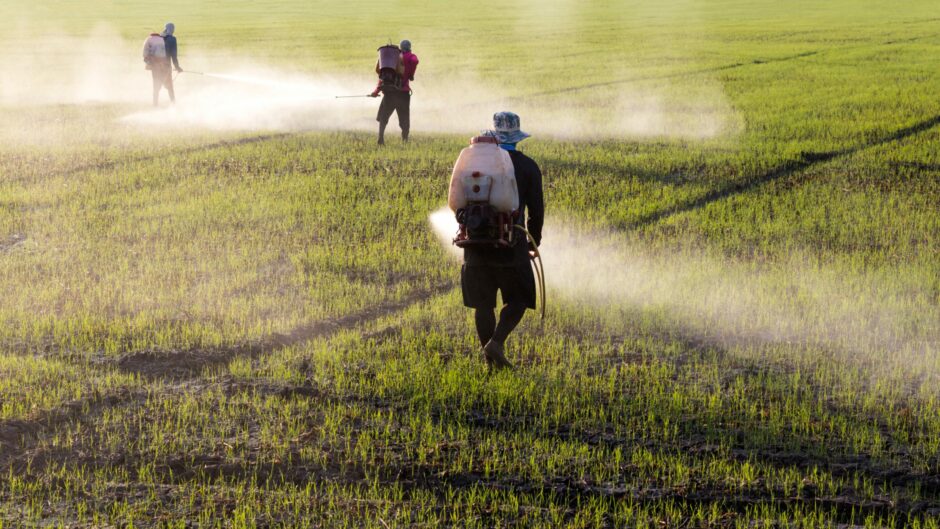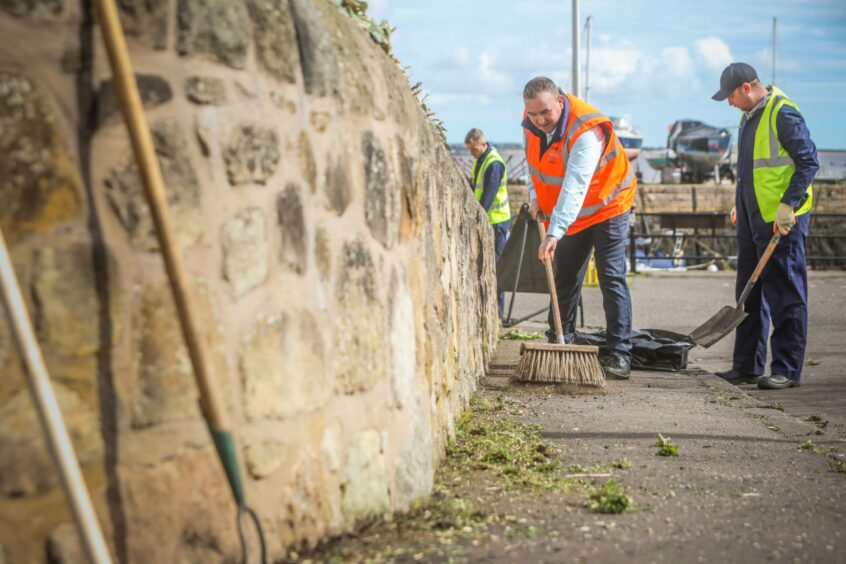Many will have, knowingly or otherwise, sprayed the weedkiller glyphosate on their patio.
It is the most widely used herbicide in the world.
And it is is sprayed by everyone from gardeners to farmers involved in large scale food production.
But the chemical was described as “probably carcinogenic” in 2015.
And a number of local authorities are considering moving to glyphosate-free weed control.
But how harmful is it?
There’s a lot of confusion about this.
It was the World Health Organization’s International Agency for Research on Cancer that concluded it has the potential to cause cancer.
But two years later, the European Chemicals Agency’s Committee for Risk Assessment (RAC) said the chemical wasn’t a carcinogen.
Meanwhile, Cancer Research UK says on its website: “Using glyphosate at low levels does not increase the risk of cancer.”
And the UK’s Health and Safety Executive (HSE) says glyphosate is “safe and efficacious”.
However, there is a caveat.
Those working with glyphosate containing products should be aware that exposure can cause “serious eye damage”, according to the RAC.
It is also said to be “toxic to aquatic life with long lasting effects”.
Is the jury out on glyphosate?
Glyphosate is at the centre of high profile lawsuits in America.
Bayer, which owns the Roundup weedkiller brand, is facing lawsuits amid claims the glyphosate-based product causes non-Hodgkin’s lymphoma.
But the pharmaceutical giant has petitioned the Supreme Court in a bid to close down the litigation.
On its website, Bayer highlights the US Environment Protection Agency’s findings that: “glyphosate is not likely to be carcinogenic to humans”.
But what do experts this side of the Atlantic think?
Scientists at The James Hutton Institute and Scotland’s Rural College (SRUC) spoke out in defence of glyphosate.
‘Popular myth’
Andrew Christie is an expert in crop production based at The James Hutton Institute.
He says there is a “popular myth” about the weedkiller.
“It’s as low a risk as it could possibly be.”

Andrew said it was worth comparing the LD50 measurement of glyphosate with alcohol.
LD50 is the ‘lethal dose’ that would kill 50% of test animals.
“The lower it is, the more toxic it is.
“Glyphosate is 5,600. Compared with nicotine at 50 and alcohol at 200.”
He adds: “A lot of it is about public perception.
“I suppose nowadays we’re almost living in a post fact world, where public perception trumps the rest.
“This is where councils are moving towards non-chemical means.”
But the Soil Association says otherwise.
On its website, the charity promoting organic farming says regulators “often refer to unpublished industry studies that aren’t publicly available and have never passed peer review”.
The organisation also warns of a “cocktail” of agricultural chemicals which can harm human health.
Greenpeace has also called on the European Parliament to ban glyphosate.
Can we afford to ditch glyphosate?
Fiona Burnett is Professor of Applied Plant Pathology at SRUC, Scotland’s Rural College.
She warns that a ban on the use of glyphosate in crop production would “lead to higher production costs and hence higher food prices”.
This, amid a cost of living crisis, would be “undesirable”.
Fiona also said public perception could be a factor in local authorities reviewing their use of weedkiller.
“Glyphosate has come under a lot of scrutiny.
“But although relatively safe, public perceptions remain important.”
How are councils responding?
Fife Council is using mechanical street sweepers and traditional hand tools to remove weeds from an area in Tayport.
If the pilot scheme proves this method is effective, it could pave the way for more glyphosate free weed control across the region.
In Perth and Kinross, a council spokesperson said the authority was testing out non-chemical weedkillers.
The council is running a consultation on changes to how it manages its open spaces. Council teams are letting some areas grow wild to boost biodiversity.
A Dundee City Council spokesperson said the use of glyphosate weedkiller was “under continuous review”.
“Over the last few years, the council has continued to reduce the amount of herbicide used to control vegetation, through the management and design of street scape and greenspace environments.”
An Angus Council spokesperson said the authority has “no immediate plans to phase out glyphosate”.
She added: “We continue to monitor industry best practise and have reduced our chemical use to the very minimum.”










